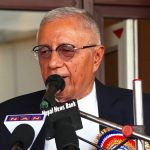
Yeti crash: Pilot reported no power in engines, says Preliminary report

Wednesday marked one month of the worst domestic air disaster in Nepal where 72 people presumably lost their lives after an Yeti Airlines ATR-72 aircraft crashed in Pokhara on January 15.
The preliminary report of the country’s deadliest plane crash in more than 30 years, has been released. The report prepared by the aircraft accident investigation commission (AAIC) states that there was no power from the aircraft’s engines before the crash.
Anju Khatiwada, who was controlling the aircraft handed over the control of the aircraft to Captain Kamal KC around 14 seconds before the crash, a preliminary investigation report said on Wednesday. A report also states that Khatiwada told KC there was no power in the aircraft. This might have been one reason for the Yeti Airlines crash.
The preliminary report also states the pilot wanted to land on Runway 12 despite being asked to land on Runway 30.
The information in the preliminary report may change as the investigation progresses, it said.
The panel has up to the end of February to submit its final report.
Earlier this month, the panel said an analysis of the cockpit voice recorder and flight data recorder showed the propellers of both engines went into “feather in the base leg of descending.”
Aviation expert K.B. Limbu said then that propellers going into feather meant there was “no thrust” in the engine, or that it did not produce any power.












Comments